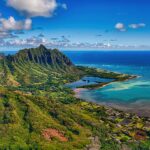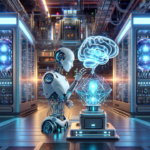Plastic cables have become an integral part of our modern world, used in various industries and applications. However, their widespread use has also raised concerns about their environmental impact and contribution to plastic pollution. In this blog post, we will explore the uses of plastic cables, their environmental implications, and sustainable alternatives that can help mitigate their negative effects on the planet.
I. What are Plastic Cables? Plastic cables are electrical cables made from various types of plastics, typically PVC (Polyvinyl Chloride). They are widely used for transmitting electrical power or signals in industries such as telecommunications, construction, automotive, and electronics.
II. Uses of Plastic Cables: Plastic cables have numerous applications due to their flexibility, durability, and electrical conductivity. They are used in power distribution systems, telecommunications networks, computer networks, audiovisual systems, and many other electrical and electronic devices.
III. Environmental Impact of Plastic Cables:
- Plastic Pollution: Plastic cables contribute to the global plastic pollution crisis. When disposed of improperly, they can end up in landfills or pollute water bodies, harming wildlife and ecosystems.
- Energy Consumption: The production of plastic cables requires significant energy inputs, contributing to carbon emissions and climate change.
- Non-Biodegradability: Most plastic cables are not biodegradable, which means they persist in the environment for hundreds of years, causing long-term environmental damage.
IV. Sustainable Alternatives to Plastic Cables:
- Recyclable Materials: Using cables made from recyclable materials such as recycled plastics or metals can reduce the environmental impact. Recycled copper cables, for example, can help minimize the need for extracting new copper resources.
- Bio-Based Materials: Bio-based cables made from renewable resources like plant-based plastics offer a sustainable alternative. These materials are biodegradable or compostable, reducing their environmental footprint.
- Fiber Optic Cables: Fiber optic cables, made from glass or plastic fibers, are an environmentally friendly alternative for transmitting data. They offer higher data transfer rates, lower energy consumption, and are not affected by electromagnetic interference.
- Metal-Clad Cables: Metal-clad cables combine the strength and durability of metal with the insulating properties of plastic. They offer better fire resistance and can be recycled at the end of their life cycle.
- Wireless Technologies: Advancements in wireless technologies, such as Wi-Fi and Bluetooth, eliminate the need for physical cables in certain applications, reducing plastic cable usage.
V. Recycling and Proper Disposal: To mitigate the environmental impact of plastic cables, proper disposal and recycling are essential. Encourage recycling programs and initiatives that accept plastic cables. Explore local recycling centers or electronic waste collection events to ensure responsible disposal.
VI. Industry and Consumer Responsibility: Both industries and consumers play a crucial role in reducing the use and impact of plastic cables. Manufacturers should prioritize eco-friendly materials and production processes, while consumers can choose products made from sustainable materials and dispose of them responsibly.
VII. Government Regulations and Policies: Government regulations and policies can incentivize the use of sustainable alternatives and promote responsible waste management. Support and advocate for policies that encourage the adoption of eco-friendly materials and recycling initiatives.
Conclusion: Plastic cables have undeniably revolutionized the way we transmit electrical power and signals, but their environmental impact cannot be ignored. By embracing sustainable alternatives, recycling, and responsible disposal, we can reduce the negative effects of plastic cables on our planet and move towards a more sustainable future.



















Add Comment